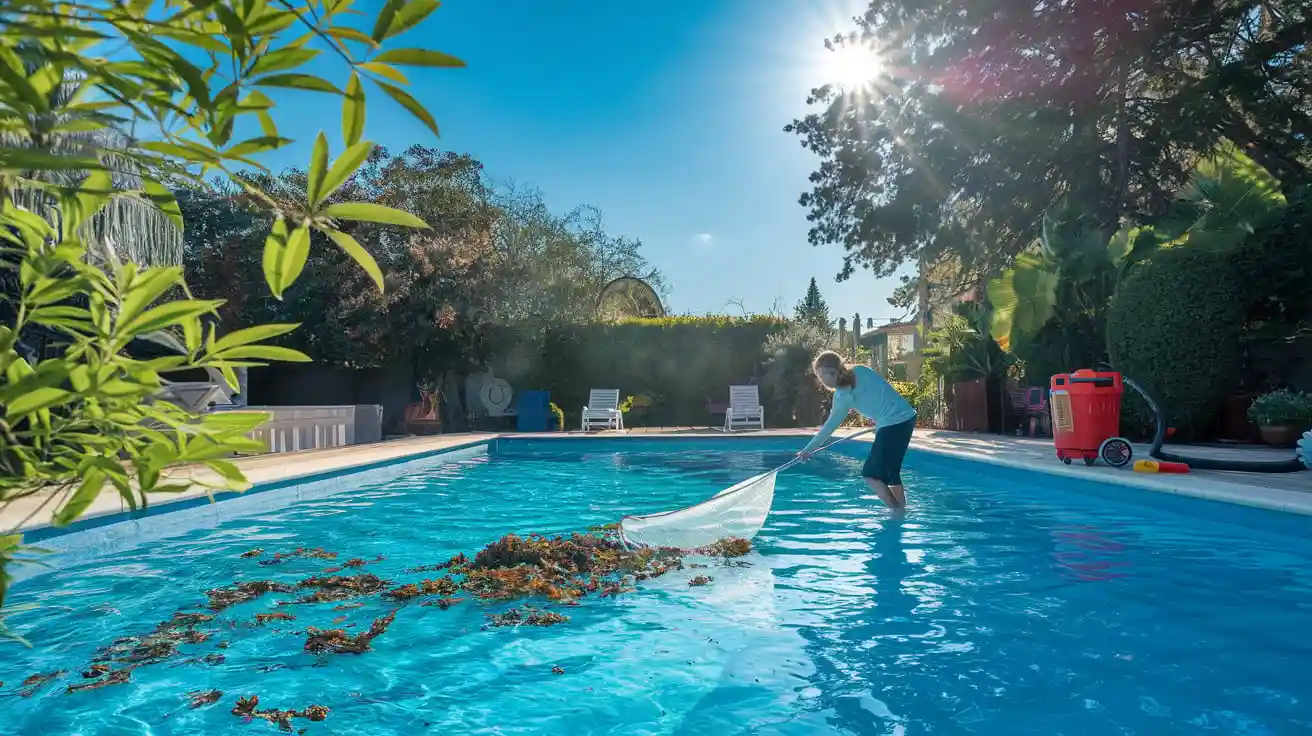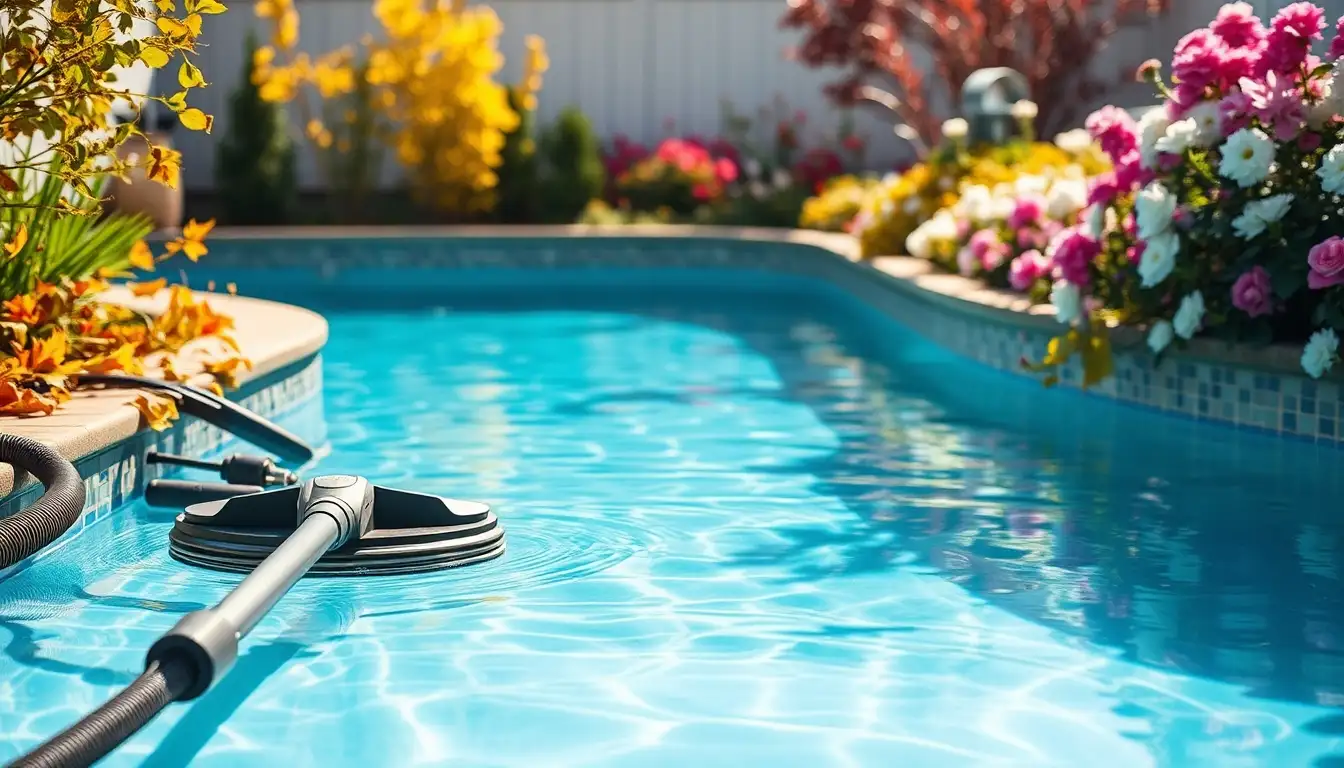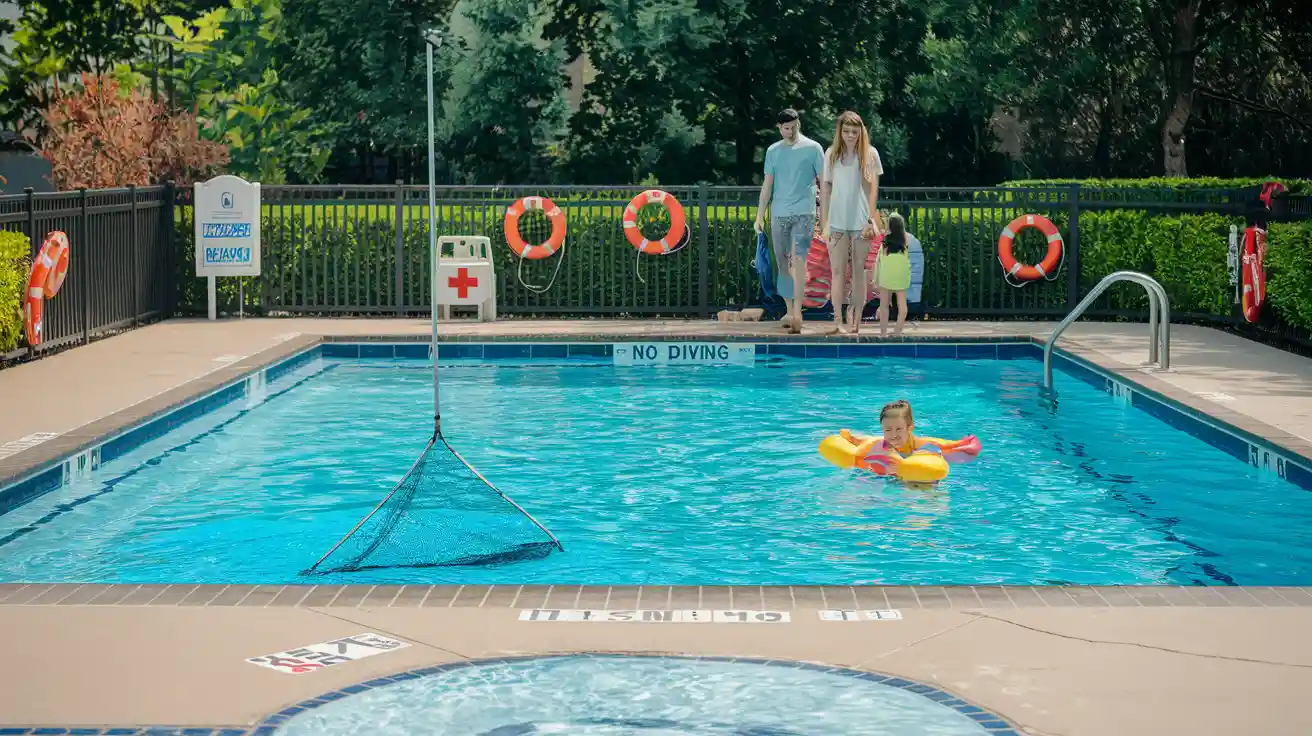Introduction
Owning an outstanding swimming pool can be a delightful experience, offering a refreshing escape during hot summer days and a space for family gatherings and relaxation. However, maintaining a swimming pool requires consistent effort and attention to ensure it remains a safe and inviting oasis. Proper maintenance not only enhances the aesthetic appeal of your pool but also prolongs its lifespan, prevents costly repairs, and ensures a safe swimming environment for you and your loved ones.
In this comprehensive guide, we will cover essential steps for swimming pool maintenance throughout the year. This checklist will help you stay organized and ensure that your pool is always in top condition, ready for use. Whether you’re a seasoned pool owner or a new one, this guide is designed to simplify your maintenance routine.
1. Regular Cleaning

Keeping your pool clean is the cornerstone of maintenance. Regular cleaning prevents debris buildup, algae growth, and water quality issues. Here are the key cleaning tasks you should perform regularly:
Skimming Debris
Frequency: Daily to weekly
Tools Needed: Skimmer net
Skimming the surface of your pool to remove leaves, insects, and other debris should be done daily during peak seasons. A skimmer net is an essential tool for this task. Regular skimming prevents debris from sinking to the bottom, which can lead to more extensive cleaning efforts later.
Brushing Walls and Tiles
How to Brush Effectively:
Using a pool brush, scrub the walls and tiles to remove dirt and algae. Pay special attention to corners and steps where debris tends to accumulate.
Recommended Brushes for Different Surfaces:
- Vinyl Pools: Soft bristle brush
- Fiberglass Pools: Medium bristle brush
- Concrete Pools: Stiff bristle brush
Brushing should be done at least once a week to keep the surfaces clean and prevent algae buildup.
Vacuuming the Pool
Manual vs. Automatic Vacuuming:
- Manual Vacuuming: A manual vacuum allows you to control the cleaning process, targeting specific areas.
- Automatic Vacuuming: An automatic pool cleaner saves time and effort, moving around the pool independently.
Tips for Effective Vacuuming:
- Always ensure your pool filter is clean before vacuuming.
- Vacuum the pool at least once a week, or more frequently during heavy usage.
Cleaning the Pool Filter
Types of Filters:
- Sand Filters: Backwash regularly and replace sand every 3-5 years.
- Cartridge Filters: Clean cartridges every 4-6 weeks, replacing them every 1-2 years.
- Diatomaceous Earth (DE) Filters: Backwash and recharge DE powder regularly.
When and How to Clean or Replace Filters:
Check your filter pressure gauge; if it’s 8-10 psi higher than normal, it’s time to clean the filter. Follow the manufacturer’s instructions for cleaning and maintenance.
2. Water Chemistry

Maintaining proper water chemistry is crucial for a safe swimming environment. Poor water balance can lead to skin irritations, algae growth, and equipment damage.
Testing Water Parameters
Essential Tests:
- pH Levels: Aim for a pH of 7.4 to 7.6.
- Chlorine Levels: Maintain free chlorine levels between 1-3 ppm.
- Alkalinity: Keep total alkalinity between 80-120 ppm.
- Calcium Hardness: Target calcium levels between 200-400 ppm.
Recommended Testing Kits and Frequency:
Use a reliable pool testing kit or strips to test water parameters at least once a week. Testing is particularly important after heavy rainfall or high pool usage.
Adjusting Water Chemistry
How to Balance pH and Chlorine Levels:
- To raise pH: Use sodium carbonate (soda ash).
- To lower pH: Use muriatic acid or sodium bisulfate.
- To raise chlorine: Add liquid chlorine or chlorine tablets.
- To lower chlorine: Allow the sun to reduce levels naturally or use a chlorine neutralizer.
Common Chemical Adjustments and Dosages:
Follow the manufacturer’s instructions for chemical dosing, and never mix chemicals directly.
Importance of Stabilizer
Role of Cyanuric Acid in Outdoor Pools:
Cyanuric acid protects chlorine from UV degradation, making it essential for outdoor pools. Aim for a stabilizer level between 30-50 ppm.
How to Add Stabilizer Correctly:
Dissolve the stabilizer in a bucket of water before adding it to the pool, and allow the pump to run for at least 24 hours to distribute evenly.
3. Equipment Maintenance

Regular equipment maintenance ensures that your pool operates efficiently and safely.
Inspecting Pool Equipment
Regular Checks for Pumps, Heaters, and Filters:
Perform monthly inspections on pool pumps, heaters, and filters. Look for any signs of leaks, rust, or wear and tear.
Signs of Wear and Tear:
Listen for unusual noises, check for vibrations, and look for signs of corrosion or damage.
Maintaining Pool Heaters
Cleaning and Servicing Tips:
- Remove debris from the heater area.
- Check the filter and clean as needed.
- Schedule professional servicing at least once a year for optimal performance.
Importance of Efficiency:
An efficient heater saves energy and costs, ensuring comfortable water temperatures.
Maintaining Pool Covers
Types of Covers and Their Maintenance:
- Safety Covers: Regularly check for integrity and clean debris.
- Solar Covers: Store properly to prevent damage.
Benefits of Using a Cover:
Covers keep debris out, reduce chemical use, and save on heating costs.
4. Seasonal Maintenance

Seasonal maintenance is crucial to prepare your pool for changing weather conditions.
Spring Opening
Steps to Prepare the Pool After Winter:
- Remove the cover and clean it thoroughly.
- Inspect equipment and replace any damaged parts.
- Fill the pool to the proper level.
Equipment Checks and Water Treatments:
Test and balance the water, shock the pool, and clean the filter before the first swim.
Summer Maintenance
Daily, Weekly, and Monthly Tasks:
- Daily: Skim debris and check chemical levels.
- Weekly: Vacuum, brush, and test water chemistry.
- Monthly: Inspect equipment and clean filters.
Keeping the Pool Safe and Enjoyable:
Regularly check for safety hazards and ensure that safety equipment is accessible.
Fall Closing
Preparing the Pool for Winter:
- Clean the pool and balance the water chemistry.
- Lower the water level below the skimmer.
- Cover the pool securely to prevent debris accumulation.
Covering and Winterizing Tips:
Use a winter cover that fits snugly and check for any damages before the winter months.
Winter Care
Monitoring the Pool in Colder Months:
Regularly check the pool cover for debris and ensure that the water level is maintained.
Importance of Maintaining Water Levels:
Keeping water in the pool during winter prevents structural damage.
5. Safety Measures

Safety should be a top priority for any pool owner.
Importance of Pool Safety
Drowning Prevention Tips:
Always supervise children around water, and consider installing alarms and safety barriers.
Safety Equipment:
Ensure you have life rings, first aid kits, and rescue equipment easily accessible.
Regular Safety Inspections
Checking for Hazards Around the Pool:
Inspect for slippery surfaces, broken tiles, and ensure that pool ladders and diving boards are secure.
Importance of Fence and Gate Maintenance:
A well-maintained fence and self-locking gate provide an essential barrier against accidental drownings.
Conclusion
Proper swimming pool maintenance is vital for ensuring a safe and enjoyable swimming experience. By following this comprehensive checklist year-round, you can keep your pool in excellent condition, save on costly repairs, and create a beautiful outdoor space for family and friends to enjoy.

